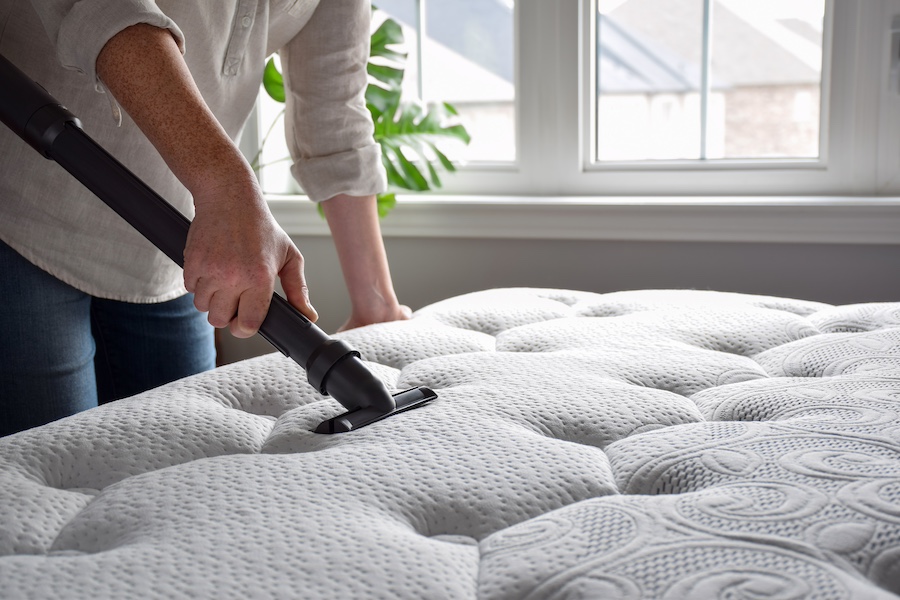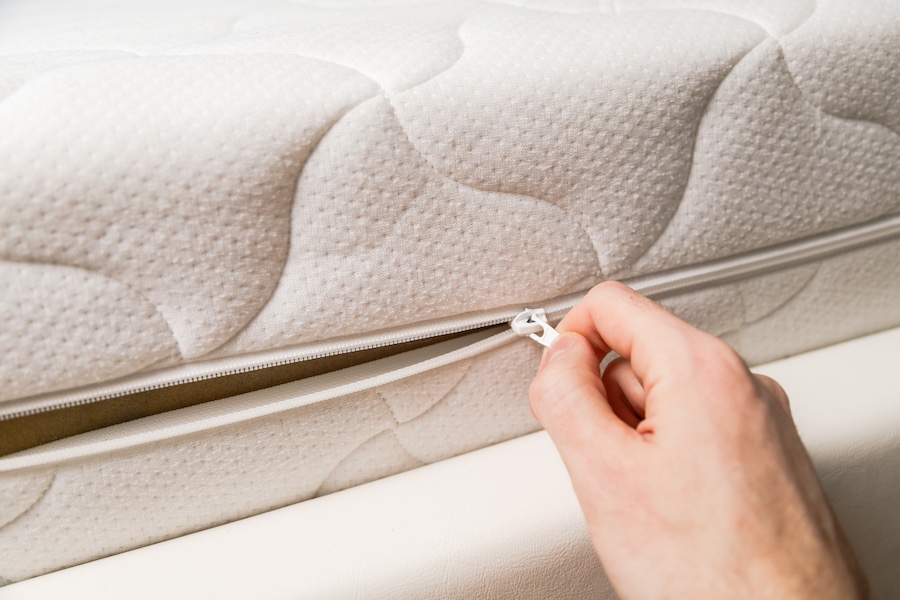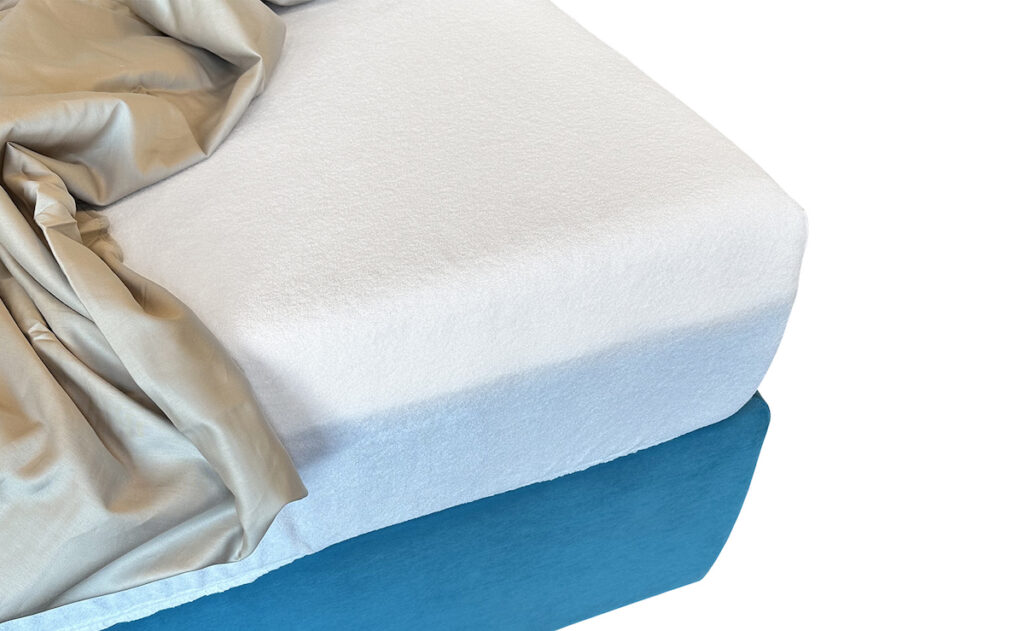Please search
How to remove mites from the mattress?

Time for spring cleaning! And along with curtains, storage, and sofa cover, we also put mattress cleaning on the to-do list. Regular cleaning and airing of the mattress is essential to protect it from the attack of mites and mould. If your mattress is made of organic materials, such as wool or cotton, mites may nest in its filling. How to remove mites from the mattress? In addition to proper maintenance, you could opt for a non-allergenic mattress, such as those made of polyurethane foam and memory foam.
Still not in the mood to change your old mattress? Here are some tips on how to eliminate mites and have a perfectly sanitized bed.
What are mites
Dust mites are small creatures that are invisible to the naked eye and can trigger annoying allergies. Being so small and mixing with the common dust we see in the home, they can find a cosy home where they can proliferate in any filling made of organic and natural materials, such as mattresses, sofas and pillows.
If you’ve been awake with annoying body bites for some time or have a cold that you don’t know where it came from, the mites may have nested in your bed. These tiny arthropods, about a quarter of a millimetre in size, can have strong negative effects on our bodies and disturb our sleep at night.
Sleep is a very important element for our psycho-physical health. That’s why you need to make sure you sleep on a mattress that’s comfortable, breathable and, most importantly, mite-free.
What problems do they cause?
Mites have the disgusting habit of feeding on human skin. In particular, tiny flakes of dead skin that we lose naturally during the day and that are found in the dust. That is why we find them inside mattresses or other objects with which we come into close contact.
Mites thrive in warm and humid environments such as the inside of an insufficiently breathable mattress can be. As explained by the National Institute of Health: “dust mite allergy is caused by the inhalation of a protein present in the ‘debris’ of dust mites, such as their faeces and decaying bodies.”
Although it is difficult to spot mites with the naked eye, there are signs that give us an idea of their presence. Continuous sneezing, itchy skin or mouth and throat, watery eyes, runny nose and nasal congestion can all be signs that bed mites are doing their dirty work. In more severe cases, they may even cause more serious problems, such as asthma, eczema or allergies.
Sleeping on a mattress infested with mites can worsen these symptoms, depending on the severity of the infestation on the surface of the mattress. It is amazing to think that in every gram of dust there could be up to 100,000 mite faeces particles, isn’t it? Symptoms associated with mites in the bed tend to be more common in hot and humid environments, which are the perfect conditions for the reproduction of these small spiders.
How do I get rid of mites?
Because they are tiny parasites and invisible to the naked eye, it is obviously difficult to ascertain their presence, and it is also quite difficult to combat them. But there are many ways to do it.
The first, as already mentioned, is to buy mattresses made of non-allergenic materials, such as polyurethane foam or memory foam, which are naturally very breathable.
However, if you have a wool or cotton mattress, you can follow these simple tips to keep it clean and hygienic.
Air the room as much as possible
First thing in the morning, as soon as you wake up, open the windows and let the air circulate for at least an hour before making the bed. In this way you will remove moisture from the environment and the mattress.
Vacuum the bedroom often
Dust is another place where mites lurk. Dust the room thoroughly whenever possible to remove dust clouds and pet hair, which can be mite carriers.
Use mattresses and cushions with removable covers
Pillow and mattress covers should be machine washed once a week. Choose high temperatures, from 40° and up.
Leave the mattress and pillows in the sun
Take advantage of spring to put your mattress and pillows in the sun for a few hours. Mites are photophobic, so they will immediately abandon your mattress!
Cleaning: How to disinfect the mattress from mites
For disinfection after the appearance of mites, you can follow several methods:
- sodium bicarbonate, which has a strong disinfectant action and is natural, therefore does not risk damaging the mattress or affecting its properties. In addition to disinfecting, it inhibits the action of mites, which cannot be reproduced. How do I use it? Sprinkle it on the surface of the mattress and leave it for a couple of hours before vacuuming up the residue.
- Essential oils of lavender, eucalyptus or tea tree oil have effective anti-mite properties. Simply dilute a few drops in a water-filled spray, shake and spray the liquid on the mattress, blankets and pillows.
- You can also use commercially available spray products, such as acaricide sprays, which may contain chemicals. Always read the label and check that you are not allergic to any substance before using these products.

Mollyflex anti-mite mattress cover
Buying a anti-mite and non-allergenic mattress certainly offers an extra guarantee of keeping dust mites, mould and bacteria out of your bedroom. However, if you do not have the possibility to change the mattress immediately, you can follow the advice we have given to disinfect it, then you can protect it with the Mollyflex anti-mite mattress cover.

This mattress hood cover is made of cotton and polyester and can be used on all types of mattresses. Thanks to its high breathability, it gives a pleasant feeling of freshness during rest, keeps the mattress dry and protects it from dirt, dust, sweat and mites. In addition, it is conveniently machine washable at 40°. If you need further advice for a good night’s sleep at any time of the year, on choosing the best mattress for your needs or on how to perform a perfect maintenance, do not hesitate to contact us or visit us at one of our stores. Our staff are on hand to help you find the ideal mattress to ensure a peaceful and rejuvenating sleep.
